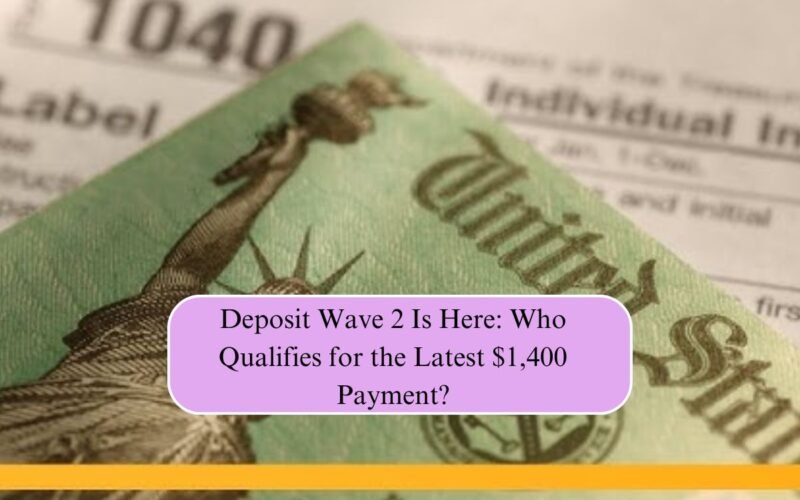The second wave of government direct deposits is underway, and millions of Americans are seeing $1,400 payments hit their bank accounts. This latest round of payments is part of ongoing federal efforts to provide financial relief for eligible taxpayers, retirees, and low-income families. As banks process these deposits, many recipients are wondering who qualifies, when to expect the money, and how to verify their payment.
What Is Deposit Wave 2?
Deposit Wave 2 refers to the second round of direct payments issued by the federal government, following the initial batch that reached millions earlier this year. The payments are designed to support households struggling with rising living costs, inflation, and unexpected expenses.
Unlike the first wave, which primarily targeted taxpayers who had previously filed their returns on time, the second wave includes additional groups such as late filers, seniors on Social Security, and families who qualified for recent tax credit adjustments.
Who Qualifies for the $1,400 Payment?
Eligibility for this latest deposit depends on several key factors:
- Income Limits: Individuals earning under $75,000 per year and couples earning under $150,000 generally qualify. Payments may be reduced for incomes above these thresholds.
- Tax Filing Status: Those who filed their 2023 tax returns or had qualifying income reported to the IRS are included.
- Social Security Beneficiaries: Seniors and disabled Americans receiving Social Security or Supplemental Security Income (SSI) may receive automatic deposits.
- Child Tax Credit Adjustments: Families who were underpaid or missed prior credit installments may see corrections included in this wave.
Recipients are automatically identified by the IRS, and no new applications are required for eligible taxpayers.
When Will the $1,400 Deposits Arrive?
The timing of Deposit Wave 2 depends on several factors, including banking method, state processing schedules, and the date of IRS approval. Individuals who receive direct deposit are expected to see the payment first, while those receiving paper checks may experience a delay of several weeks. Payments are generally being distributed in batches over several weeks to ensure accuracy and avoid errors.
How to Verify Your Payment
To confirm that you are included in Deposit Wave 2, you can check the status through your IRS account or review your bank statement. Direct deposits are typically labeled with “IRS TREAS 310” or similar codes, while checks will arrive in standard mail with official government markings. It’s important not to fall for scams — the IRS does not contact recipients by phone or email to request personal information regarding these deposits.
Why This Payment Matters
The $1,400 payment provides essential financial support for millions of Americans, helping cover everyday expenses such as groceries, rent, medical bills, and utilities. For retirees and low-income households, this relief can make a significant difference in maintaining financial stability during uncertain economic times.
What to Do If You Don’t Receive the Payment
If you believe you are eligible but haven’t received your payment, take the following steps:
- Check your bank information to ensure the IRS has the correct account for direct deposit.
- Verify your tax filings for 2023 to confirm eligibility.
- Monitor the IRS “Get My Payment” tool for updates on processing.
- Contact the IRS if a payment is missing after the expected distribution period.
FAQs
1. Who qualifies for the $1,400 Deposit Wave 2 payment?
Eligible recipients include taxpayers earning under $75,000 individually or $150,000 jointly, Social Security and SSI beneficiaries, and families with recent Child Tax Credit adjustments.
2. Do I need to apply for this payment?
No. The IRS automatically identifies eligible individuals based on recent tax filings and benefits records.
3. When will I receive my $1,400 deposit?
Direct deposits are arriving in waves over the next few weeks, while paper checks may take longer depending on mail schedules.
4. How can I verify my payment?
Check your bank statement for deposits labeled “IRS TREAS 310” or use your IRS online account to confirm payment status.
5. What should I do if I don’t receive the payment?
Verify your bank information, confirm tax filings, and monitor IRS updates. Contact the IRS if your payment is missing beyond the expected timeframe.

